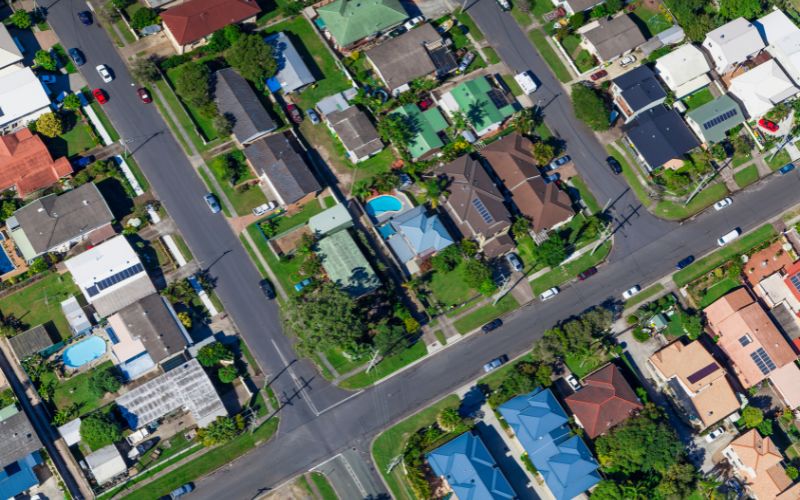
Experts at Hotspotting are observing a significant shift in the housing market — capital cities are seeing a resurgence in demand, particularly Sydney, which is reclaiming its spot as the strongest housing market.
According to Hotspotting Price Predictor Index (PPI) for Spring 2023, the top 10 markets over the past quarter include the following:
- Sydney, NSW
- Blacktown, NSW
- Brisbane North, Qld
- Casey, Vic
- Gold Coast, Qld
- Gladstone, Qld
- Melbourne, Vic
- Stirling, WA
- Tea Tree Gully, SA
- Wollongong and Shoalhaven, NSW
Hotspotting director Terry Ryder said the increase in sales activity in numerous areas is expected to lead to a faster price growth in both cities and regional markets throughout Australia.
“Without question, recovery and resurgence are the dominant themes with seven out of 10 locations in the nation now having positive sales activity trends – a massive improvement on the situation three months ago, when we saw the first signs of revival,” he said.
For Hotspotting general manager Tim Graham some markets even had “dramatic” turnarounds, with Sydney reclaiming its spot as the top market.
“The recovery signs we noted six months ago, and more strongly three months ago, have strengthened further – and now Sydney is Australia’s strongest market,” he said.
“Some 80% of suburbs have positive sales trends, which is the best percentage in the nation — the revival is widespread across all sectors, with units notably to the fore.”
Mr Ryder and Mr Graham identified five key major trends unfolding in the market right now:
Revival is gaining momentum.
Mr Ryder said seven of the top 10 locations across Australia are recording sales activity that surpasses the level seen in the previous three-month period.
“Now we are seeing growth momentum in most corners of the nation; among the capital cities and regional jurisdictions of the nation, only two – Canberra and Darwin – remain in the doldrums,” he said.
“Everywhere else, resurgence and growth are the dominant themes.”
PPI classified only 6% of locations as “declining markets”, significantly lower than the 17% during the winter period.
“It’s clear that multiple rate rises have had little impact,” Mr Ryder said.
Big cities are reclaiming the top spots.
Mr Graham said big cities are making a comeback after being overshadowed by smaller cities and regional areas as national leaders in market activity.
“While Perth and Adelaide remain as busy as before, Sydney, Melbourne, and Brisbane are all markets on the rise, with Sydney ranked as the number one market nationwide based on having 82% of suburbs with positive sales trends,” he said.
Apartments are becoming more in-demand.
Mr Ryder said more buyers are going for apartments given their relative affordability, particularly in inner-city areas.
“The top municipality in Greater Melbourne is the City of Melbourne, and the City of Sydney has similar status in the Greater Sydney market in this Spring survey,” he said.
“The City of Hobart leads the market in the Tasmanian capital, while the Brisbane inner precinct is a stand-out in the Queensland capital, and inner Perth is among the strong markets in the WA capital.”
Mr Ryder said the lifestyle in these inner-city markets and the affordability of apartments are the core drivers of buyer demand for the specific property type.
Outer-ring precincts are bouncing back.
Mr Graham said the revival in buyer demand in Sydney, Melbourne, and Brisbane has included recovery in the affordable areas.
“The City of Blacktown has led the resurgence in western Sydney, the City of Casey is prominent in the Greater Melbourne comeback, and outer-ring precincts of Greater Brisbane have seen buyer demand recover,” he said.
“Meanwhile, the bottom end continues to thrive in the Adelaide and Perth markets.”
Regional markets are maintaining their strong activity.
While cities are regaining their momentum, regional markets remained strong and are still reporting high buyer demand.
Mr Ryder said this goes against the headlines suggesting that demand in regional markets has collapsed and that prices are no longer rising.
“Our analysis refutes that — New South Wales, Victoria, and Queensland have all recorded big turnarounds in buyer demand in this Spring survey, while demand has continued at steady levels in South Australia, WA, and Tasmania.”
Buying a home or looking to refinance? The table below features home loans with some of the lowest interest rates on the market for owner occupiers.
| Lender | Home Loan | Interest Rate | Comparison Rate* | Monthly Repayment | Repayment type | Rate Type | Offset | Redraw | Ongoing Fees | Upfront Fees | Max LVR | Lump Sum Repayment | Extra Repayments | Split Loan Option | Tags | Features | Link | Compare | Promoted Product | Disclosure |
|---|---|---|---|---|---|---|---|---|---|---|---|---|---|---|---|---|---|---|---|---|
5.29% p.a. | 5.33% p.a. | $2,773 | Principal & Interest | Variable | $0 | $530 | 90% |
| Promoted | Disclosure | ||||||||||
5.19% p.a. | 5.10% p.a. | $2,742 | Principal & Interest | Variable | $0 | $0 | 80% |
| Disclosure | |||||||||||
5.39% p.a. | 5.43% p.a. | $2,805 | Principal & Interest | Variable | $0 | $530 | 90% |
| Promoted | Disclosure |
-
Photo by zstockphotos on Canva.
Collections: Mortgage News Property News Buying a home





Share